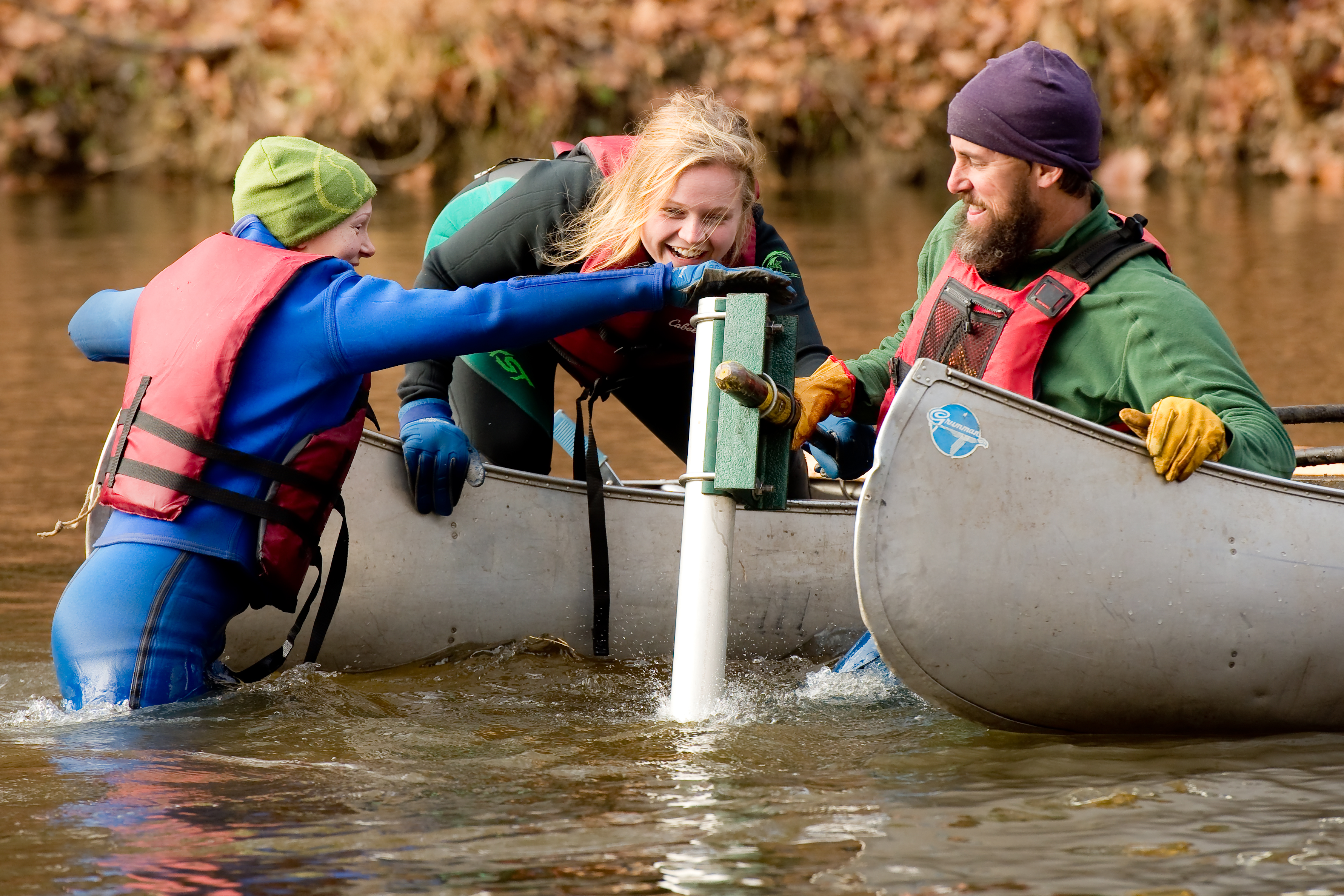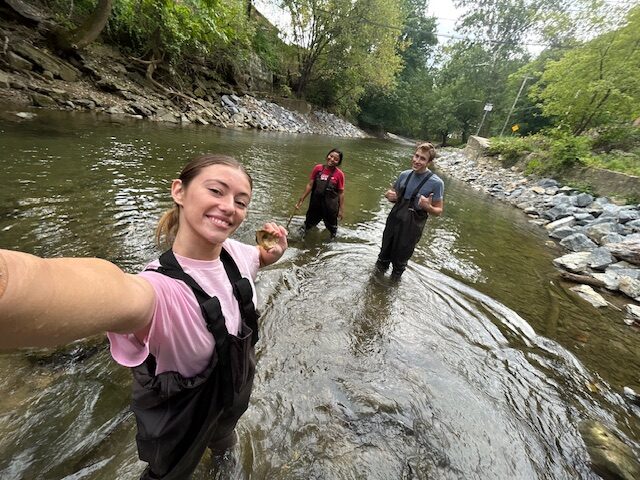Ever since we found out about the proposed dam removals along Bushkill Creek, my students and I have been studying and carefully assessing both the risks and benefits of dam removal, and the likelihood for restoration success.

Josh Hitchings ’14 and Brad Ohlinger use a water quality meter at one of our Bushkill Creek monitoring sites.
This research is especially important since fewer than 10% of dam removals have been scientifically evaluated, and most of these studies were short and had limited to no pre-removal monitoring (Bellmore et al. 2017).
The primary goals of pre-dam removal risk assessment are to:
- determine magnitude of alterations caused by existing dams, and the likelihood for restoration success if/when they are removed.
- Assess potential impacts of legacy sediments on biota. Legacy sediments accumulate behind dams and can contain significant amounts of environmental contaminants. Release of contaminated legacy sediments following dam removal represent a potential hazard for stream organisms.
In order to measure alterations of existing dams, we have been monitoring water quality and macroinvertebrates at 14 sites on a monthly to biweekly basis since 2010 at free-flowing reference sites and sites upstream and downstream of dams. We examine macroinvertebrates (e.g., larval forms of various insects) because, like canaries in a coal mine, they are considered excellent bioindicators of stream ecosystem health. Not surprisingly, our monitoring data indicate that water quality is degraded surrounding the dams in comparison to reference locations. What is more important is that our pre-removal monitoring dataset will serve as a benchmark for what will happen following dam removal and as a way to frame restoration objectives.
In order to assess potential risks related to legacy sediments, we have collected sediment cores upstream of four of the dams, analyzed them for heavy metals and PCBs, and performed associated toxicity assays to determine the singular and interactive effects of these contaminants on survival and behavior of common macroinvertebrates in Bushkill Creek. Overall, the results of our sediment analyses and toxicity assays indicate little risk from metal contaminants.

With the help of Caroline Ladlow ’16 and Professor John Wilson, Ginny Hoyt ’16 uses a vibracore to extract sediments from behind one of the dams. The sediments were analyzed for legacy contaminants, such as lead and cadmium, that could be released into the system during the removal process.
Given that our pre-restoration assessment suggested that benefits outweighed risks of dam removal in Bushkill Creek, we were excited to work with Wildlands Conservancy and our restoration partners to plan the removals. Dam removal began in 2021 and is ongoing. As of August 2024, four of the seven dams along Bushkill Creek have been removed and another one is slated for removal in summer 2025. Our lab will continue post-removal monitoring as a way to assess whether restoration goals of improved water quality and increased biodiversity are being met.

As part of her Environmental Science Honors Thesis, Jamie Bryan ’25 (front) will statistically analyze whether there are any differences between pre- and post-removal water quality at restored sites. Eurnett Christopher ’25 and Kurtis Campbell ’25 help her with her field work.
LAB FAM members who have contributed to this project: Raphael Cuomo ’11, Carly Boyd (Feiro) ’12, Ryan Hughes ’13, Josh Hitchings ’14, Dionne May ’15, Ginny Hoyt ’16, Caroline Bottega ’19, Donna Hanna ’22, Charles Kelshaw ’23, Eurnett Christopher ’25, and Jamie Bryan ’25.
A manuscript describing this work was published in Environmental Monitoring and Assessment in 2017 (Rothenberger et al. 2017).

